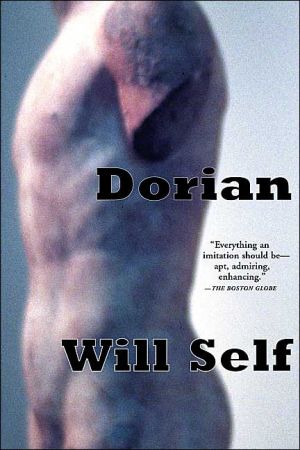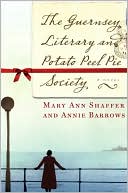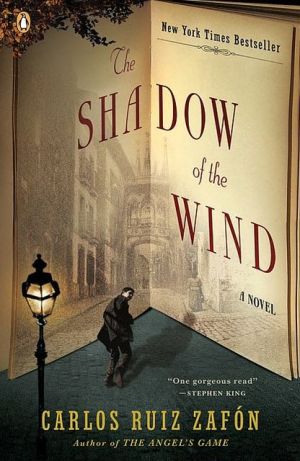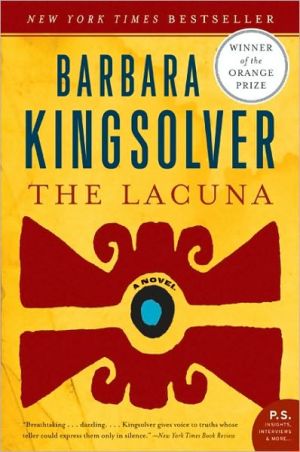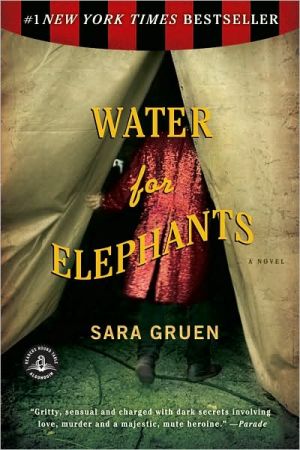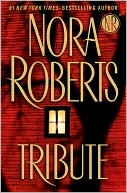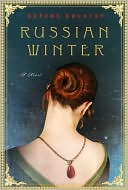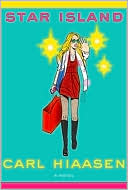Dorian: An Imitation
Henry Wotton, gay, drug addicted, and husband of Batface, the irrefutably aristocratic daughter of the Duke of This or That, is at the center of a clique dedicated to dissolution. His friend Baz Hallward, an artist, has discovered a young man who is the very epitome of male beauty - Dorian Gray. His installation Cathode Narcissus captures all of Dorian's allure, and, perhaps, something else. Certainly, after a night of debauchery that climaxes in a veritable conga line of buggery, Wotton and...
Search in google:
Henry Wotton, gay, drug addicted, and husband of Batface, the irrefutably aristocratic daughter of the Duke of This or That, is at the center of a clique dedicated to dissolution. His friend Baz Hallward, an artist, has discovered a young man who is the very epitome of male beauty — Dorian Gray. His installation Cathode Narcissus captures all of Dorian's allure, and, perhaps, something else. Certainly, after a night of debauchery that climaxes in a veritable conga line of buggery, Wotton and Hallward are caught in the hideous web of a retrovirus that becomes synonymous with the decade. Sixteen years later the Royal Broodmare, as Wotton has dubbed her, lies dying in a Parisian underpass. But what of Wotton and Hallward? How have they fared as stocks soar and T-cell counts plummet? And what of Dorian? How is it that he remains so youthful while all around him shrivel and die? Set against the AIDS epidemic of the eighties and nineties, Will Self's Dorian is a shameless reworking of our most significant myth of shamelessness, brilliantly evoking the decade in which it was fine to stare into the abyss, so long as you were wearing two pairs of Ray-Bans.The New YorkerSubtitled "An Imitation," this reworking of "The Picture of Dorian Gray" transposes the story to a nineteen-eighties London of artists, aristos, junkies, and feverish promiscuity. The portrait is now a video installation, "Cathode Narcissus," and its original, Dorian, a beautiful, blank, omnisexual monster who remains immune to the AIDS epidemic, which claims most of the other characters. Mapping Wilde's era onto Thatcher's makes Self's grungy style incongruously mannered ("Oh jolly good, such a bore, smack"), as if Nancy Mitford and Johnny Rotten had decided to collaborate. The novel's sub-Wildean epigrams ("A witticism is merely the half-life of an emotion"), the ceaseless talk, and the preordained plot preclude any satisfying development. Self's bad-boy career, like his hero's, now spans slightly more than a decade. Perhaps in an attic somewhere he keeps a novel that displays the depth and maturity that are absent here.
\ The New YorkerSubtitled "An Imitation," this reworking of "The Picture of Dorian Gray" transposes the story to a nineteen-eighties London of artists, aristos, junkies, and feverish promiscuity. The portrait is now a video installation, "Cathode Narcissus," and its original, Dorian, a beautiful, blank, omnisexual monster who remains immune to the AIDS epidemic, which claims most of the other characters. Mapping Wilde's era onto Thatcher's makes Self's grungy style incongruously mannered ("Oh jolly good, such a bore, smack"), as if Nancy Mitford and Johnny Rotten had decided to collaborate. The novel's sub-Wildean epigrams ("A witticism is merely the half-life of an emotion"), the ceaseless talk, and the preordained plot preclude any satisfying development. Self's bad-boy career, like his hero's, now spans slightly more than a decade. Perhaps in an attic somewhere he keeps a novel that displays the depth and maturity that are absent here.\ \ \ \ \ Publishers WeeklyIn this retelling of Oscar Wilde's The Picture of Dorian Gray, most of the original's characters are cleverly transmuted into their late-20th-century counterparts: dissolute Henry Wotton, now openly homosexual with a nasty heroin habit; his protege, eager young video artist "Baz" Hallward; and the title character, the quintessential amoral narcissist and a "seducer par excellence" (of men and, occasionally, women). In the summer of 1981, Hallward captures Gray's youth and beauty in a video installation that he titles "Cathode Narcissus." He and Wotton take Gray under their wing and school him in the ways of profligate London living, early '80s-style. By 1997, all three are HIV-positive, though Dorian, of course, shows no sign of illness. Self uses Wilde's plot to examine post-Stonewall gay life, from its drug-fueled hedonistic excesses to the reckoning of the AIDS epidemic. The novel skewers every layer of British society-street hustlers, members of Parliament and the idle rich. Real-life figures also appear, most notably the "princess of bulimia," Diana Spencer. The prose is laced with epigrammatic, lightly amusing pseudo-Wildean wit ("I want my sins to be like sushi-fresh, small and entirely raw," says Wotton), but its wordplay and evocation of debauchery also owe something to Evelyn Waugh and Martin Amis (channeling Hunter Thompson and Irvine Welsh). Self's mannered prose can grow tedious, and there's hardly a sympathetic character to be found, but the writer has undertaken-and largely succeeded in pulling off-a daring act of literary homage. (Jan.) Copyright 2002 Cahners Business Information.\ \ \ Library JournalTo reimagine a classic work-especially when its author is the flamboyant and witty Oscar Wilde-is a daunting task, but Self (How the Dead Live) rises to the challenge. Upon its publication in 1891, The Picture of Dorian Gray shocked Victorian sensibilities. That Self's work will have a similar impact seems doubtful; as a society familiar with the works of Bret Easton Ellis, Thomas Harris, and Clive Barker, we have come too far, or, some may think, sunk too low. This is not to say, however, that Self has not done a masterly job of resetting the story in the era of AIDS, where Dorian's self-indulgent behavior proves to have a particularly devastating effect. The aristocratic Henry Wotton remains Dorian's decadent mentor and master of the bon mot. Baz Hallward remains hopelessly enamored of the Adonis-like young man, whom he talks into becoming the centerpiece for a video installation but for whom he remains an object of contempt. Alan Campbell and Lady Narborough are among the others reprised. Modern additions include Princess Di and the drug-dealing Ginger. Dorian's is a tale that allows Self to indulge his own penchant for word play, black humor, and uncomfortable imagery while continuing to explore the themes of sexual identity and social decadence. It is graphic and violent and definitely not everyone's cup of tea, but as an adaptive exercise it hits the mark. A story well suited to our times, this is recommended for larger public and most academic libraries.-David W. Henderson, Eckerd Coll. Lib., St. Petersburg, FL Copyright 2002 Cahners Business Information.\ \ \ \ \ Kirkus ReviewsReduced to a shadow of his former self in imitating Wilde's The Picture of Dorian Gray, Self (How the Dead Live, 2000) vaults into life's viscera to lampoon England's upper crust while skipping across the art/drug/gay culture on both sides of the Atlantic. \ Dorian Gray this time around is initially the independently wealthy plaything of a video-installation artist, Baz, whose work Cathode Narcissus, with its iterated imagery of Dorian in the buff, is the combined product of Baz's drooling passion for his subject and of a drug-laced modeling session. But Baz's aristo friend and drug benefactor Henry Wotton also takes a guiding hand in Dorian's development, and in the process a lascivious monster is born. Dionysian debaucheries consume Wotton and his coterie, culminating in a party to celebrate Baz's installation, now in Dorian's house, at which Herman, a homeless black hunk Dorian fancies, is so thoroughly used that he immediately goes back to his squat and ODs. A decade later, Baz, Wotton, and Dorian are all HIV-positive, the first two having already started their death spirals. Dorian, however, is still in the lip-smacking bloom of his youth (although something uncanny is happening to his image on the Narcissus videotapes); as Baz visits Wotton in a London AIDS ward, he recounts his adventures with Dorian in 1980s Manhattan, where the golden boy became the toast of the town while Baz kicked his drug habit. Dorian reenters their lives at a dinner party soon thereafter, but that same night Baz is butchered by the man he adored. Other grisly murders follow, as Dorian fights to protect his secret, but Wotton lingers on against all odds. He finally succumbs, though-leaving behind themanuscript that was the novel thus far, a work that triggers a startling transformation in Dorian when it comes into his hands.\ Works of art may overcome the living here, but artifice and insufferable blather do the job on its reader.\ Author tour\ \ \
